Papers by Terrence Chambers

2019 ASEE Annual Conference & Exposition Proceedings, Sep 10, 2020
Leaving the classroom and engaging in learning through first-hand experience has a long tradition... more Leaving the classroom and engaging in learning through first-hand experience has a long tradition in science and engineering education. A virtual field-trip is a way of providing users with some knowledge and virtual experience of a facility without requiring them to physically visit the location. Virtual labs can provide remote-access to various disciplines of Science, Technology, and Engineering (STE) disciplines and are a cost-efficient way for schools and universities to organize high-quality laboratory work. Due to constrictions on time and geographical distances, virtual-labs can be used to share costly equipment and resources, which are otherwise available to a limited number of users. The Photovoltaic (PV) Applied Research and Testing (PART) Lab encompasses a 1.1 MW PV power plant with three solar panel technologies, metrological and radiometer stations, and PV testing lab. PV-VR is an application that uses a scale model of the PART lab for educational interactive lab tours in virtual reality (VR). The actual PV solar power plant is virtualized and virtual representations of all the objects in the plant are inserted into the application. PV-VR takes users on a guided educational tour that allows them to interact with the various technologies to facilitate virtual hands-on learning. The virtual tour is guided by a teacher avatar that explains each technology and initiates animations and interactive educational games with constructive feedback to reinforce learning. PV-VR allows users to learn about solar power technologies and, how power is produced, converted and transmitted. This paper is a summary of the PV-VR application and initial qualitative results from a pilot study.

The ASEE Computers in Education (CoED) Journal, Mar 31, 2019
The need for place-based environmental education is paramount to facilitate understanding of comp... more The need for place-based environmental education is paramount to facilitate understanding of complex issues and to support diverse learners in an engaging and authentic pedagogical method. The objective of this design-based research study was to develop, implement, and refine environmental lessons in an interactive virtual reality experience. The Virtual Reality Ecolitercy Curriculum (VREC) was developed using Unity and tested with middle school students in eighth grade classrooms in Lafayette, Louisiana. The VREC frames learning as a way to explore the theory of place within a virtual environment to inform the design of future educational lessons and learning curricula, thereby facilitating change in learners’ (a) environmental knowledge, (b) engagement, and (c) understanding of how affected communities construct a larger awareness of environmental change. The change was tracked over the course of one school year with two distinct VREC lessons. The participants showed improvement on the quantitative tests, and the qualitative results produced overwhelmingly positive responses. This paper details the two VREC lessons and concludes with future implications for improvement of design and implementation of ecoliteracy lessons in virtual reality, including advancing research on assessing and improving learning in immersive virtual environments.
The ASEE Computers in Education (CoED) Journal, Dec 1, 2018
This paper presents a study on the use of virtual reality (VR) technologies for the purpose of te... more This paper presents a study on the use of virtual reality (VR) technologies for the purpose of teaching concentrating solar power (CSP) to high school and university students. The main goal is to develop an interactive and immersive VR application to explain the main components and processes used in a CSP plant. The secondary goal is to test the effectiveness of this application by performing case studies. The studies are assessed with pre-test, post-test, and questionnaires. In the initial desktop version, there is a substantial improvement on the post-tests that demonstrates that this type of application can be used as an educational tool. The immersive application achieved testing results in the final study that were similar to other methods assessed and scored 88% positive results on the experience questionnaire.

Science and Technology for the Built Environment, 2021
Hydronic coils are often exposed to non-uniform air velocities due to a series of factors, includ... more Hydronic coils are often exposed to non-uniform air velocities due to a series of factors, including tight spacing between a fan and a coil, flow area contraction and expansion, existence of obstructions, abrupt change in airflow direction, or the combination of above factors. Although studies showed non-uniform air velocities could cause performance degradation for direct expansion (DX) cooling coils, efforts in quantifying this impact on hydronic cooling coils are limited. The objective of this paper is to develop and validate a section-by-section calculation procedure for cooling performance prediction of hydronic coils with non-uniform air velocities. As the first step, air velocities at the coil face in a hydronic fan coil unit (FCU) were measured using a vane-type anemometer. The coil was then discretized into multiple sections, with each section using the measured air velocity for heat and mass transfer analysis. The cooling performance prediction with non-uniform air velocities was validated against experimental results. The comparative analysis showed that capturing the impact of non-uniform air velocities decreased the normalized root mean square error (RMSE) from 39.9% to 8.1% for latent capacity prediction and 9.1% to 2.6% for total capacity prediction compared with the results assuming uniform air velocities.

International Journal for Innovation Education and Research, 2020
The diversity of learners within education is neither linear nor constant. Educators are challeng... more The diversity of learners within education is neither linear nor constant. Educators are challenged to be responsive and understanding when encouraging learners to construct meaning while adhering to stringent standards. The objective of this study is to integrate science standards into authentic learning experiences, created in both a traditional teaching method and virtual reality (VR) platform, for 8th grade middle school students in Lafayette, Louisiana. The authentic experiences were based on oral histories of the residents of Isle de Jean Charles, Louisiana, who have lost 98% of their ancestral homeland since 1955. These experiences were then tied to the National Science Standards (8-MS-ESS1-4, 8-MS-ESS2-2, and 8-MS-ESS3-1). The students were split into two groups and given either a PowerPoint or VR experience, both having the same content. The researchers tracked engagement, focus, interest, and how important the students thought the content was. Using an experimental approac...

2012 ASEE Annual Conference & Exposition Proceedings
In recent years the National Society of Professional Engineers (NSPE) and the American Society of... more In recent years the National Society of Professional Engineers (NSPE) and the American Society of Civil Engineers (ASCE) have been leading an effort to require a bachelor's degree plus a Master's degree or at least 30 additional acceptable credit hours in order to fulfill the educational requirements for a P.E. degree. The BS + 30 proposal, also known as the Raise the Bar Initiative, has been met with staunch opposition by other professional societies, such as the American Society of Mechanical Engineers (ASME), which want to retain the BS degree as the first professional degree. In many of the debates on this issue it seems that the parties are talking past each other using specialized definitions and not really engaging each other in meaningful debate. As a result, the Raise the Bar Initiative is stalled and the planned implementation date has been slipped from 2015 to 2020. This paper sets forth a comprehensive five-step plan to reconcile the competing interests in the Raise the Bar debate, proposing a politically feasible way to close the industry exemption, retain the BS degree as the first professional degree, and simultaneously restore 30 hours of engineering content subsequent to the BS degree and prior to registration as a PE. The key to the proposal is to focus first on Raising the Bar for Engineering Interns, after which changing the requirements for Professional Engineers will be more politically feasible. The five steps are: 1) retain the BS as the educational requirement for Engineering Interns, 2) eliminate the industry exemption for Engineering Interns, 3) require continuing professional development (CPD) courses for Engineering Interns, 4) increase the CPD requirements for both Engineering Interns and Professional Engineers to 45 hours per year, the equivalent of one 3credit hour college course per year, and 5) after ten years have passed, require the equivalent of 30 credit hours after the BS degree prior to registration as a PE. Once the first four steps have been in place for ten years, the first batch of EI's to become registered under the new system would have 450 PDH's (or the equivalent of 30 additional credit hours), at which point they would meet the educational requirements of the Raise the Bar Initiative to qualify for the PE exam. By focusing first on Engineering Interns, a politically feasible method is proposed to both close the industry exemption and phase in the adoption of the Raise the Bar initiative.

Electric Power Systems Research, 2019
The objective of this paper was to develop and solve different constrained optimal power flow (OP... more The objective of this paper was to develop and solve different constrained optimal power flow (OPF) problems for hybrid power systems containing renewable energy sources like wind energy and solar power. OPF seeks to optimize the transmission of electric power by finding a steady state operating point that minimizes gas emission and cost of generated electric power without disturbing network power flow, operating limits and system constraints. The OPF problem was solved using a hybrid modified imperialist competitive algorithm and sequential quadratic programming, (HMICA-SQP). Efficacy of the modified imperialist competitive algorithm (MICA) is further enhanced by the process of hybridization with the sequential quadratic programming (SQP) for rapid local refinement and improved precision of the solution. The potential and effectiveness of the proposed metaheuristic were presented and assessed using three benchmark test systems IEEE 30, IEEE 57 and IEEE 118bus power systems that incorporates several solar and wind energy sources. Comparison of simulation results with recently published optimization approaches solutions showed that the suggested paradigm is more efficient, robust and provides the lowest cost of generated electric power while keeping low emissions.

Energies, 2018
The optimal power flow (OPF) module optimizes the generation, transmission, and distribution of e... more The optimal power flow (OPF) module optimizes the generation, transmission, and distribution of electric power without disrupting network power flow, operating limits, or constraints. Similarly to any power flow analysis technique, OPF also allows the determination of system’s state of operation, that is, the injected power, current, and voltage throughout the electric power system. In this context, there is a large range of OPF problems and different approaches to solve them. Moreover, the nature of OPF is evolving due to renewable energy integration and recent flexibility in power grids. This paper presents an original hybrid imperialist competitive and grey wolf algorithm (HIC-GWA) to solve twelve different study cases of simple and multiobjective OPF problems for modern power systems, including wind and photovoltaic power generators. The performance capabilities and potential of the proposed metaheuristic are presented, illustrating the applicability of the approach, and analyze...

Soft Computing, 2017
Application of fuzzy-analytic hierarchical process (fuzzy-AHP) has been growing continuously to s... more Application of fuzzy-analytic hierarchical process (fuzzy-AHP) has been growing continuously to select the best alternative. In the fuzzy-AHP approach, first the complex problem is itemized into a hierarchical structure for pairwise comparisons. Once a comparison matrix is formed, a triangular fuzzy number concept is adopted to assign priority weights with a view to capture the inherent vagueness in linguistic terms of the decision-maker. In evaluation, if two triangular fuzzy numbers are not intersecting (t 11 -t 23 ≥ 0), then corresponding degree of possibility value is assumed to be zero (0). However, such situation simply represents the case of one criterion being immensely stronger than other and should not receive a zero value. In this regard, the article proposes an enhanced fuzzy-AHP approach where the triangles are extended about x-axis. This allows developing a mathematical formulation to estimate the true values of height of ordinate (degree of possibility). The empirical study of ranking the SECI modes in the order they influence the performance of the detailed design phase is considered to demonstrate the applicability and usefulness of the proposed framework. In order to measure the performance, five criteria are selected based on a rigorous literature review. After stringent experimentation, it is found that combination and externalization modes highly influence but other modes in order of internalization and socialization loosely have an effect on underlying phase.

International Journal of Applied Power Engineering (IJAPE), 2013
Solar thermal plants are basically power plants that generate electricity from high-temperature h... more Solar thermal plants are basically power plants that generate electricity from high-temperature heat. The difference between them and conventional power plants is that instead of deriving energy from gas, coal or oil, the sun provides the energy that drives the turbines. In this paper we will give a brief demonstration of solar thermal power and different system designs of solar thermal power plants. Then we will see the feasibility of implementing solar power plants in Louisiana which currently depends mostly on its conventional power plants which use traditional fuels such as gas, oil, and coal. This study was a part of a proposal that was funded by the US the Department of Energy to construct solar thermal plant near Lafayette, Louisiana. The power plant is currently under the construction and it will be completed by Summer of 2013.

International Journal of Information Management, 2015
Continuous innovation is a key ingredient in maintaining a competitive advantage in the current d... more Continuous innovation is a key ingredient in maintaining a competitive advantage in the current dynamic and demanding marketplace. It requires an organization to regularly update and create knowledge for the current generation, and reuse it later for the next generation of a product. In this regard, an integrated dynamic knowledge model is targeted to structurally define a practical knowledge creation process in the product development domain. This model primarily consists of three distinct elements; SECI (socialization-externalization-combination-internalization) modes, 'ba', and knowledge assets. The model involves tacit knowledge and explicit knowledge interplay in 'ba' to generate new knowledge during the four SECI modes and update the knowledge assets. It is believed that lean tools and methods can also promote learning and knowledge creation. Therefore, a set of ten lean tools and methods is proposed in order to support and improve the efficiency of the knowledge creation process. The approach first establishes a framework to create knowledge in the product development environment, and then systematically demonstrates how these ten lean tools and methods conceptually fit into and play a significant role in that process. Following this, each of them is analyzed and appropriately positioned in a SECI mode depending on best fit. The merits of each tool/method are discussed from the perspective of selecting the individual mode. The managerial implication is that correct and quick knowledge creation can result in faster development and improved quality of products.
35th Intersociety Energy Conversion Engineering Conference and Exhibit, 2000
A key element for space missions and outposts such as a lunar base is a well-designed thermal con... more A key element for space missions and outposts such as a lunar base is a well-designed thermal control system which provides an adequate thermal environment for both crew and equipment. One concept for accomplishing this is a reflux boiler device which operates like a heat pipe, transferring waste heat from the habitat module via a thermal bus to vertical tubes

Sustainability, 2021
Soiling effects influence the output of solar thermal plants, significantly causing unwanted tran... more Soiling effects influence the output of solar thermal plants, significantly causing unwanted transmittance, reflectance, and absorbance losses. Research is needed to identify what type of reflective surfaces are best suited for semitropical climates, such as the southeastern United States. This paper initially presents a review of several concentrating solar power (CSP) reflector testbeds used to analyze the soiling effects of various reflective materials. A soiling testbed is developed for this study that comprised six sets of reflective surfaces mounted at a fixed tilt of 30 degrees: three sets of thin-film surfaces and three sets of glass types. Two generations of 3M solar mirror film (SMF), 3M SMF 1100 and 3M SMF 2020, were used along with Konica Minolta SMF, silvered Corning Willow Glass, a dichroic cold mirror, and a standard mirror. Results show that the 3M SMF 2020 and Konica Minolta SMF performed the best during regular cleaning intervals, whereas the silvered Corning Willo...


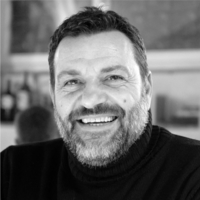

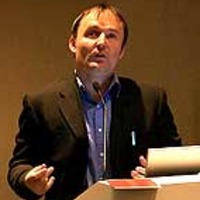
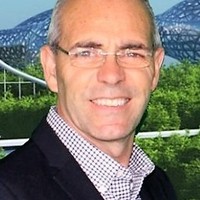

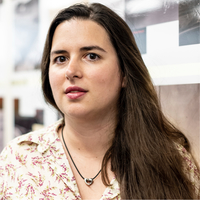
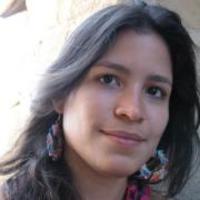
Uploads
Papers by Terrence Chambers